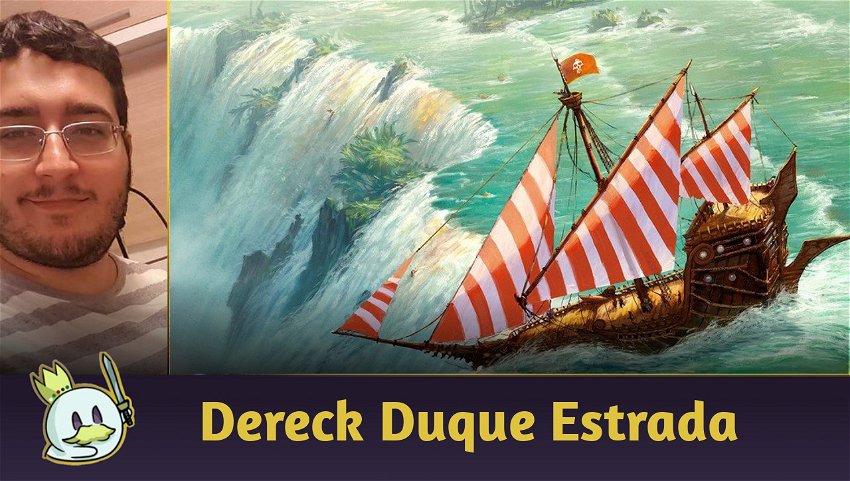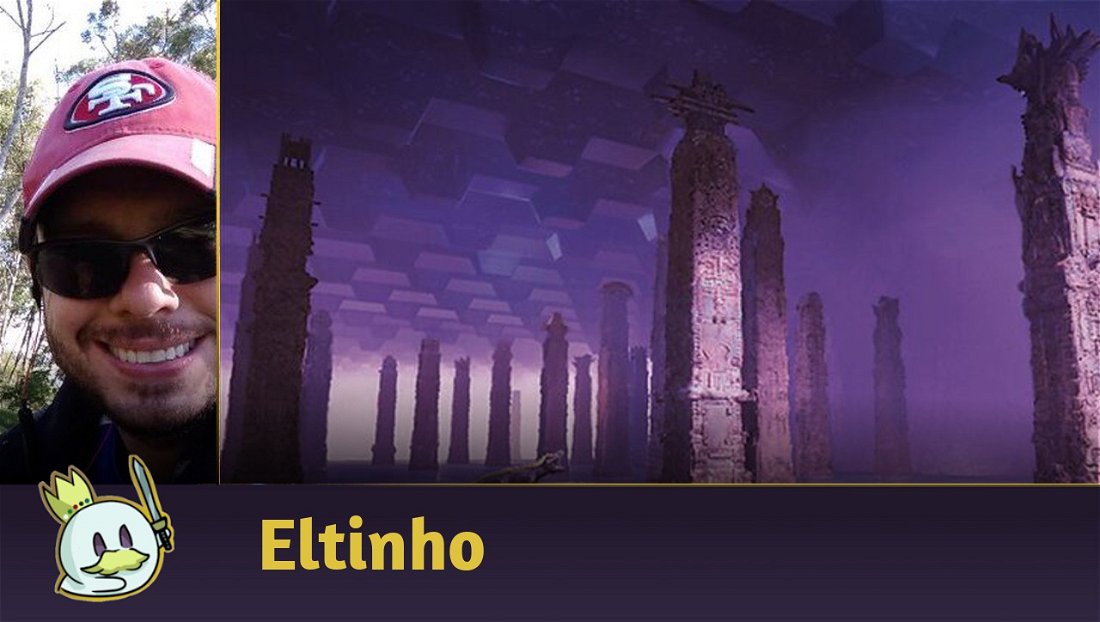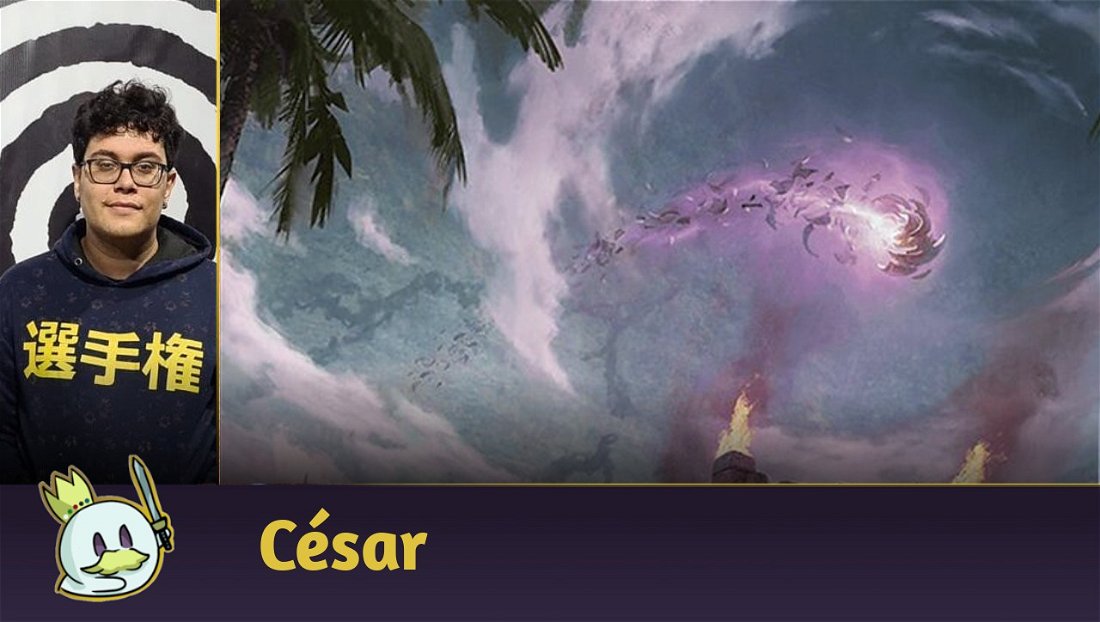Introduction
November has arrived, bringing with it the latest collection - and now we'll be seeing the consequences of the war against Phyrexia in Ixalan.
Lost Caverns of Ixalan (LCI) is the newest Magic collection, and with the spoilers finished, it's time for us to give our assessment of the cards.
In this article, we will talk about the mechanics, archetypes, and their key cards, removals, and mana fixes available for Limited events (Pre-Release, Sealed, or Draft).
So enough talk, let's dive into the collection analysis!
About Lost Caverns of Ixalan
Like the Ixalan and Rivals of Ixalan collections, The Lost Caverns of Ixalan is filled with creatures that share a common type, such as Dinosaurs, Pirates, Vampires, and Merfolk. Therefore, we can expect considerably powerful creatures and good interactions between them.
Mechanics
Another relevant point is the collection's mechanics. We have the return of explore, double-faced cards, and land cyclings, providing a better dynamic for Limited. In addition to these, we have a series of new abilities that can be extremely relevant in the format.
Explore
Explore is a mechanic already known to Magic players. When a creature activates the ability, you reveal the top of the deck. If it's a land, you put it in your hand; if not, you put a +1/+1 counter on the creature and then decide whether the card stays on top or goes to the graveyard.
It's an ability that provides card advantage or power increase to the board along with control of the top of the deck. Additionally, the ability has excellent synergy with mechanics that interact with the graveyard and reanimation.

Land Cycling
Cards with Land Cycling are ways to ensure access to the necessary colors, preventing the absence of lands in the right colors from hindering the development of our game.
Unlike Land Cycling from LTR, here the cost becomes 2 to perform its effect, with one of each color.

Craft
Craft is a mechanic related to artifacts in the collection, where activation costs typically involve exiling the artifact itself, exiling permanents from the graveyard or the battlefield, and paying activation costs. The effect can only be activated at sorcery speed.
Since all steps are activation costs, when activating the ability, the cards will be exiled, and it is not possible to perform removal at the time of activation.

Descend
Descend is a mechanic that assesses the number of permanents in your graveyard. Its effects are activated in four ways:
If permanents went to the graveyard this turn, with the effect occurring in the end phase (there is a spell that allows choosing both effects if descended this turn).
If there are 4 permanents in the graveyard.
If there are 8 permanents in the graveyard.
Effects enhanced according to the number of permanents in the graveyard.
Descend 4, Descend 8, and Fathomless Descent (looks at the total number of permanents in the graveyard when used) are ways to take advantage of the value that already exists in the graveyard, enhancing spells that have already been cast and the strategy of feeding the graveyard.

Discover
Discover is a mechanic very similar to Cascade. A spell with discover will reveal cards from the top until it finds a non-land card with a mana cost lower than the ability's level. Then the player can choose to cast the revealed card for free or put it into their hand. The revealed cards are placed at the bottom of the library in random order.

Map Token
Map Token are artifact tokens with the ability to pay 1 mana, tap the map, and sacrifice it, causing the target creature to explore.
Beyond the various interactions with artifacts, enhancing the power of creatures or removing lands from the top can be important in a format like Limited, where there are moments of board balances, making these choices significant.

Finality Counters
These counters arise as a way to organize the game with abilities that bring cards back to the battlefield, usually from the graveyard, and if they die, they are exiled. So, Finality Counters were created to shorten this description and make a common mechanic more practical.
For Limited, it can be a way to reuse creature effects or bring relevant creatures back to the battlefield.

Archetypes
After discussing the format mechanics, it's time to look at the main archetypes.
Azorius Artifacts


For the white and blue combination, we have an archetype focused on artifacts. Cards that care about other artifacts will be used, such as Thousand Moons Smithy, Braided Net, Fabrication Foundry, and Master’s Guide-Mural.
For this archetype, cards that create artifact tokens and disrupt the opponent's game plan become crucial, considering that Craft abilities are geared towards the late game.
Spring-Loaded Sawblades is a good removal option for the archetype.

Best Common Cards

Best Uncommon Cards

Orzhov Aristocrats


In the white and black combination, we have the sacrifice archetype, where it's important to have fuel to feed the engine and cards that take advantage of the mechanic.
Vito, Fanatic of Aclazotz, Bartolomé del Presidio, and Dusk Rose Reliquary are sources that leverage the mechanic to achieve effects, while Greedy Freebooter, Fanatical Offering, and Broodrage Mycoid function as fuels, providing what is needed to keep the strategy effective.

Best Common Cards

Best Uncommon Cards

Boros Aggro


As usual, the white and red combination brings an Aggro strategy, focused on casting as many spells as possible in the early turns and aggressively attacking the opponent.
Inti, Seneschal of the Sun allows trading extra lands for more gas and aggressiveness on your board. Quintorius Kand is an excellent way to maintain board presence and take advantage of spells with Discover, draining the opponent's life at the same time. When combined with Caparocti Sunborn, you can increase the board while punishing the opponent.
Ojer Axonil, Deepest Might and Bonehoard Dracosaur are extremely powerful cards on their own, serving as excellent finishers for the deck.
Sanguine Evangelist is a good option for the moment when the board is consolidated.

Best Common Cards

Best Uncommon Cards

Selesnya Counters


For the archetype in the white and green colors, we have the mechanic of counters.
The strategy aims to use creatures with triggered abilities based on controlling creatures with power greater than their original power.
Sovereign Okinec Ahau and Kutzil, Malamet Exemplar are key cards for the archetype. Explorer’s Cache, Ironpaw Aspirant, and Jade Seedstones are ways to put counters on your creatures.
Another way to get counters is with creatures with the explore ability, such as Kinjalli's Dawnrunner, Miner’s Guidewing, Glowcap Lantern, and Jadelight Spelunker.
Thus, the archetype is capable of gaining advantage with the cards on the board becoming stronger.

Best Common Cards

Best Uncommon Cards

Dimir Descend


In the blue and black colors, we have an archetype that cares about the number of cards in your graveyard, focusing on the Descend abilities.
The Ancient One is one of the best cards here, capable of fueling the graveyard, and after activating Descend, it becomes a very effective finisher.
Permanent cards that feed the graveyard and return to hand are extremely relevant, such as Sage of Days and Orazca Puzzle-Door.
Other important cards for the archetype include Chupacabra Echo and Song of Stupefaction, as they function as creature removals and contribute to Descend when they leave the battlefield.
Tarrian’s Journal is another synergistic piece, able to keep resources in hand while the graveyard is being fed, and when transformed, it allows you to bring creatures back from your graveyard.

Best Common Cards

Best Uncommon Cards

Izzet Pirate Artifacts


In the blue and red combination, we have an archetype focused on the use of artifacts. However, unlike Azorius, which emphasizes Craft ability, Izzet has a greater interaction with artifacts entering the battlefield and the combined effects of pirate-type creatures.
Saheeli, the Sun’s Brilliance is very efficient at taking advantage of ETB (enter the battlefield) effects, such as those of Magmatic Galleon, Idol of the Deep King, or Waylaying Pirates.
Another relevant card in these colors is Captain Storm, Cosmium Raider. If you can build a deck with a significant number of pirates, it's possible to create a strategy that makes each one an extremely relevant threat. Cards like Plundering Pirate, Breeches, Eager Pillager, and Enterprising Scallywag are excellent for increasing the efficiency of the strategy.
Poetic Ingenuity is extremely strong within the archetype, allowing you to build a board and increase mana availability, making any cast artifact a significant threat.

Best Common Cards

Best Uncommon Cards

Simic Explore


In the green and blue colors, we have an archetype focused on the Explore mechanic, enhancing its effects.
Cards like Nicanzil, Current Conductor, Deepfathom Echo, Twists and Turns, and Merfolk Cave-Diver are examples of pieces that take advantage of the mechanic.
Glowcap Lantern, Seeker of Sunlight, and Subterranean Schooner are ways to keep the strategy working, ensuring land drops and growing the board's power.
The strategy of the archetype will be to use the mechanic to increase the board and improve deck draws, generating consecutive advantages to overcome the opponent.

Best Common Cards

Best Uncommon Cards

Rakdos Descended


In the black and red combination, there is interaction with cards that go to the graveyard during the turn. Unlike the Dimir strategy, which cares about the total quantity, Rakdos looks only at what was done during its turn. Zoyowa Lava-Tongue and Molten Collapse are examples.
Since the strategy is not focused on the quantity of permanents in the graveyard, the deck can mix its form, using sacrifices, discards, and mill to activate the abilities.
Other relevant cards for the archetype include Stalactite Stalker, Corpses of the Lost, Brass’s Tunnel-Grinder, and Enterprising Scallywag.
Child of the Volcano can emerge as an excellent finisher if the mechanic is well integrated.
Promising Vein and Restless Vents function by activating the mechanic and correcting the deck's mana availability.
Souls of the Lost and Fanatical Offering are good cards to be used as cogs in the deck.
Dead Weight is extremely efficient, capable of removing opponent creatures and acting as a trigger for the archetype's functionality.

Best Common Cards

Best Uncommon Cards

Golgari Descend


In black and green, we have another archetype that cares about cards in the graveyard, similar to the Dimir version, but with more aggressive effects in Golgari.
The Mycotyrant and Akawalli, the Seething Tower are examples of how the deck's strategy develops. They are low-cost creatures that can quickly get out of control if there are no removals for them.
Stinging Cave Crawler is a way to replenish lost cards, and Broodrage Mycoid enhances board growth.
Echo of Dusk and Basking Capybara are cards that can become very aggressive when accompanied by ways to quickly fill the graveyard.
Malamet Veteran is another card that needs to be controlled before it gets out of hand, as it can grow on its own or boost the power of your board.
The Skullspore Nexus is an artifact that can easily enter the battlefield for 4 or 5 mana, and after that, combat becomes highly advantageous. The power of your creatures can be doubled, and removed cards leave behind tokens as strong as themselves.

Best Common Cards

Best Uncommon Cards

Gruul Dinos Stompy


In the red and green combination, we have an archetype focused on Dinosaurs, aiming to take advantage of cards like Burning Sun Cavalry, Belligerent Yearling, Earthshaker Dreadmaw, and Palani’s Hatcher.
Other supporting cards include Itzquinth, Firstborn of Gishath, Thrashing Brontodon, and Hulking Raptor, offering a range of abilities to the deck while boosting the board.
Bonehoard Dracosaur is an extremely efficient option, providing card advantage, board enhancement, and mana availability while being a relevant creature with evasion. One of the best creatures available for the archetype.
Pugnacious Hammerskull is another efficient option, especially since the majority of creatures will be dinosaurs. It can secure clean attacks frequently, forcing the opponent to lose a significant amount of life or creatures.
Ghalta, Stampede Tyrant is a highly decisive card but requires well-executed ramp sequences. When it hits the field, your hand is likely to be empty, limiting the use of its ability. If you can conserve resources and play Ghalta with 1 or 2 heavy creatures in hand, it can be a game-changer.

Best Common Cards

Best Uncommon Cards

Mana Fixing
In the collection, besides allied color manlands favoring fixing, there are lands that allow adjustment of color availability, such as Sunken Citadel, Promising Vein, Pit of Offerings, and Echoing Deeps. Additionally, there's Cavern of Souls for creature-based decks of the same type.
As an alternative option, Captivating Cave serves as mana filtering, not as efficient as other solutions, but still an option to fix a specific pending color.

Another option for mana fixing is through artifacts like Sunbird Standard and Scampering Surveyor, both providing a form of ramp for the deck.
Compass Gnome ensures the land drops for the next turn, putting land cards on top of the deck, working well when triggering an explore ability.

Land Cycling cards from the cycle like Soaring Sandwing, Marauding Brinefang, Rampaging Spiketail, Seismic Monstrosaur, and Nurturing Bristleback offer a temporary solution to find the missing colors, adjusting the mana curve or offering appropriate fixing while providing a relevant creature card for the late game.

A temporary option is Careening Mine Cart or Buried Treasure, providing treasures for temporary mana availability or specific fixing.

Segregating by colors, in Izzet, there's The Belligerent, which creates treasures when attacking. In green, Poison Dart Frog acts as the mana dork of the collection, capable of generating mana of any color.
In red, besides creatures creating treasures, there's Diamond Pick-Axe - an equipment that makes the equipped creature create a treasure when attacking. An incolor version, observed in the Kaldheim Limited, Goldvein Pick, is quite effective. Small changes may determine if it's more or less efficient, as although the equip cost increased, the equipment became indestructible and only needs to attack to create treasure. Its major limitation is being in the red color, which should restrict its use.

Removals
Removals are a crucial aspect of the collection. Here are some of them, focusing on the key ones for each color.
White


Among the available removals, Dusk Rose Reliquary and Get Lost are the strongest in white: low mana cost, low cost, and little benefit for the opponent.
In a collection where artifact tokens are easy to generate, whether in the form of treasure or maps, the cost of Dusk Rose Reliquary is easy to pay.
Spring-Loaded Sawblades deserves mention for having flash and being able to return as a 5/5 vehicle crewed by 1 (with the possibility of being crewed by artifacts).
Blue


No blue, in addition to traditional tempo plays like bounces, creature flips, and counterspells, we have Eaten by Piranhas as a way to deal with spells with annoying abilities on the field.
Confounding Riddle is a good counter option for Limited, considering its additional ability can be activated, providing versatility to the card.
Black


Malicious Eclipse is a removal more suitable for the sideboard, effective in matches against Aggro decks.
On the other hand, Terror Tide is perfect for use in Reanimate-focused decks, able to fill the graveyard in the early turns and wipe out the opponent's board.
Bitter Triumph can be a way to feed Descend mechanics, serving as excellent removal.
Dead Weight is another efficient removal in archetypes targeting the graveyard, as it fuels Descend while dealing with opponent creatures.
Red


With the abundance of artifacts available, the value of Abrade increases considerably, removing 64.6% of the field.
Magmatic Galleon is capable of removing more than 90% of the collection's field, making it an excellent way to deal with threats.
Triumphant Chomp has excellent potential, especially in dinosaur-based decks, with the possibility of dealing up to 12 damage if Ghalta is on the battlefield! Remember that with Saheeli’s Lattice, it's possible to have a dinosaur with greater power than Ghalta.
Another point to note is that if there are no dinosaurs on the battlefield when the card is resolved, the damage dealt is two. So, it's essential to be very attentive to the possibility of opponent removal use.
Tectonic Hazard, although causing low damage, can be effective against decks with many tokens.
Calamitous Cave-In is extremely situational. It can function as a potent board wipe, but it will depend solely on how many caves you were able to find, making it either an excellent removal or a dead weight in hand. For Sealed and Pre-Release events where the card pool is not selected, it seems extremely situational, introducing unnecessary risks.
Green


In green, removals follow the green pattern, causing damage equal to the target creature's power or making two creatures fight, generating some benefits.
However, the enchantment removals in the collection are more versatile. Cosmium Confluence, for example, has additional functions, allowing enchantment removal in the main deck without affecting the deck's strategy. Similarly, Over the Edge, with the added benefit of this removal being able to act against artifacts.
Conclusions
The Lost Cavern of Ixalan presents a very interesting and versatile collection, and the absence of dual lands is addressed by the Land Cycling cycle and the Treasure Token.
Additionally, all archetypes show similarities with other colors.
Dimir interacts with Golgari, as they revolve around the Descend mechanic.
Izzet pairs well with Azorius, having artifacts as a foundation.
Rakdos can have a good combination with Orzhov, blending the sacrifice plan with the strategy of having effects when a permanent goes to the graveyard on the turn.
These are the combinations with clearer interactions, but it's possible to develop other interactions with a third color as a central color—just remember to use mana-fixing methods and ensure the necessary colors.
I believe this will be an excellent collection for drafting, with very versatile combinations and interesting gameplay.
For you, which archetype seemed more interesting?

I really liked Gruul Dinos.
I hope you enjoyed the article! Any questions, you can post them in the comments.














— Comentarios 0
, Reacciones 1
Se el primero en comentar